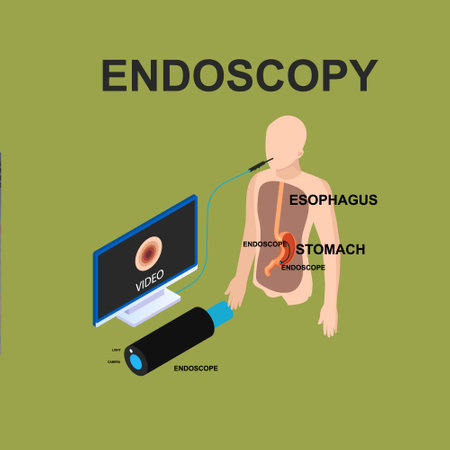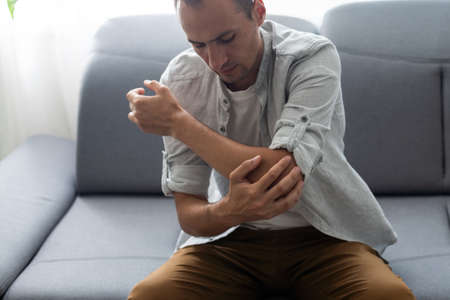1. Understanding Fibromyalgia and Chronic Widespread Pain
What Are Fibromyalgia and Chronic Widespread Pain?
Fibromyalgia is a chronic health condition that causes widespread pain throughout the body, along with other symptoms like fatigue, sleep problems, and difficulty thinking clearly (sometimes called “fibro fog”). Chronic widespread pain (CWP) is a similar condition where pain is felt in multiple areas of the body for three months or longer. These conditions are often grouped together because they share many symptoms and can be challenging to diagnose and manage.
Epidemiology: Who Is Affected?
In the United States, fibromyalgia affects about 2% to 4% of the population. It is more common in women than men and most often appears between ages 30 and 60, but it can affect people of any age. CWP also impacts millions of Americans, sometimes as part of other health issues like arthritis or autoimmune diseases.
| Condition | Estimated U.S. Prevalence | Most Affected Age Group | Gender Most Commonly Affected |
|---|---|---|---|
| Fibromyalgia | 2–4% | 30–60 years | Women (about 80–90%) |
| Chronic Widespread Pain | 10–15% | All ages (more common with age) | Women & Men (slightly more women) |
Diagnostic Criteria in the U.S.
Doctors use specific guidelines to diagnose fibromyalgia. The American College of Rheumatology (ACR) recommends looking at:
- Pain Location: Pain in at least four out of five regions of the body for at least three months.
- Pain Severity: Patients rate their pain and other symptoms using a scale called the Widespread Pain Index (WPI) and Symptom Severity Scale (SSS).
- No Other Cause: Symptoms cant be explained by another medical problem.
CWP is diagnosed when pain is present on both sides of the body, above and below the waist, for at least three months.
Common Symptoms Experienced by Patients in the U.S.
The main symptom for both fibromyalgia and CWP is long-lasting, widespread pain. But patients often report other challenges as well:
| Main Symptom | Description |
|---|---|
| Pain | Dull ache lasting at least three months, affecting muscles and soft tissues all over the body |
| Fatigue | Tiredness that doesnt improve with rest or sleep |
| Sleep Problems | Trouble falling asleep or staying asleep; waking up feeling unrefreshed |
| Cognitive Difficulties (“Fibro Fog”) | Trouble concentrating, remembering details, or thinking clearly |
| Mood Disorders | Anxiety, depression, or feeling overwhelmed by daily tasks |
| Sensitivity to Touch/Temperature/Noise | Painful response to things that wouldnt usually hurt, such as light pressure or loud sounds |
| Headaches/Irritable Bowel Syndrome (IBS) | Migraines, tension headaches, stomach pain, diarrhea, or constipation are common in many patients |
The Impact on Daily Life in America
Living with fibromyalgia or chronic widespread pain can make everyday activities—like working, exercising, running errands, or spending time with family—much harder. Many Americans find these conditions impact their quality of life and may require adjustments at work or home.
2. Assessment and Patient-Centered Goal Setting
Best Practices for Evaluating Physical Function, Pain Levels, and Quality of Life
When working with individuals who have fibromyalgia or chronic widespread pain, physical therapists in the United States use a variety of tools to evaluate how these conditions affect daily living. The assessment process helps create a clear picture of each person’s challenges and guides treatment planning.
Key Assessment Areas and Tools
| Assessment Area | Common Tools & Methods | Purpose |
|---|---|---|
| Physical Function | 6-Minute Walk Test, Timed Up and Go (TUG), Functional Reach Test | Measures mobility, endurance, balance, and ability to perform daily activities |
| Pain Levels | Visual Analog Scale (VAS), Numeric Rating Scale (NRS), Pain Diagrams | Helps track pain intensity and location over time |
| Quality of Life | Fibromyalgia Impact Questionnaire (FIQ), Short Form Health Survey (SF-36) | Assesses how symptoms impact physical, mental, and social well-being |
| Mood & Sleep Quality | Pittsburgh Sleep Quality Index (PSQI), Patient Health Questionnaire-9 (PHQ-9) | Evaluates sleep patterns and emotional health, which are often affected by chronic pain |
Collaborative Goal Setting: Putting Patients First
A patient-centered approach means that therapists work together with patients to set goals that truly matter in their everyday lives. Rather than focusing only on reducing pain or improving test scores, the focus is on what the individual wants to achieve—like walking to the mailbox, playing with grandchildren, or returning to work.
Steps in Collaborative Goal Setting
- Open Communication: Therapists encourage patients to share their experiences, values, and priorities.
- Realistic Expectations: Goals are based on current abilities and personal motivation, not just medical standards.
- Meaningful Activities: Goals reflect activities that make daily life better or more enjoyable for the patient.
- Regular Review: Progress is tracked together; goals can be adjusted as needs or abilities change.
Example: Turning Assessments Into Actionable Goals
| Assessment Finding | Patient Priority/Need | Collaborative Goal Example |
|---|---|---|
| Trouble climbing stairs due to fatigue and pain (6-Minute Walk Test) | “I want to be able to go upstairs without stopping.” | “Within 8 weeks, climb one flight of stairs at home with minimal rest breaks.” |
| Pain interrupts sleep almost every night (PSQI) | “I wish I could sleep through the night.” | “Improve sleep quality so I wake up less than twice per night within 3 months.” |
| Difficulties with shopping and carrying groceries (FIQ) | “I want to grocery shop by myself again.” | “Carry groceries from the car to the kitchen independently within 6 weeks.” |
Through thorough assessment and open communication, physical therapists help people living with fibromyalgia or chronic widespread pain create step-by-step plans that support their independence and quality of life. This collaborative approach is at the heart of effective physical therapy in American practice.

3. Exercise Therapy Approaches
Exercise therapy is a core part of physical therapy interventions for individuals living with fibromyalgia and chronic widespread pain. Research shows that certain exercise programs can help manage symptoms, improve quality of life, and even reduce pain levels over time. The key is to choose safe, gentle exercises tailored to each person’s needs and abilities.
Evidence-Based Exercise Interventions
When working with chronic pain conditions like fibromyalgia, exercise should be introduced gradually and carefully. Here are some evidence-based approaches commonly used in the United States:
Graded Aerobic Activity
This approach involves slowly increasing physical activity levels over time, based on what the individual can tolerate. Activities such as walking, cycling on a stationary bike, or light dancing are popular options. The goal is not intensity but consistency, starting with short sessions (as little as 5-10 minutes) and building up as endurance improves.
Gentle Stretching
Stretching exercises help improve flexibility and reduce muscle stiffness, which are common complaints among people with fibromyalgia. Gentle stretches for major muscle groups can be done daily at home or in a group class. Yoga and tai chi are also recommended because they combine stretching with relaxation techniques.
Aquatic Therapy
Exercising in warm water reduces the strain on joints and muscles while providing resistance that helps build strength. Aquatic therapy classes—often offered at community pools or rehab centers—are especially helpful for those who find land-based exercises too painful.
Sample Exercise Recommendations
| Exercise Type | Description | Frequency | Tips |
|---|---|---|---|
| Walking | Slow-paced walking indoors or outdoors | 3-5 times/week | Start with 5-10 minutes; increase as tolerated |
| Stretching | Gentle stretches for neck, back, arms, legs | Daily | Hold each stretch for 20-30 seconds; avoid bouncing |
| Aquatic Therapy | Exercises performed in a warm-water pool | 1-3 times/week | Look for community pool classes; water should be warm (around 86°F) |
| Yoga/Tai Chi | Mild forms focused on movement and breathing | 2-3 times/week | Select beginner classes designed for chronic pain conditions |
Pacing and Personalization Matter
The most important aspect of exercise for fibromyalgia and chronic widespread pain is to respect your own limits. It’s okay to have good days and bad days. Physical therapists in the U.S. often encourage a “start low, go slow” approach—meaning begin with very small amounts of activity and increase only when it feels comfortable. Always communicate openly with your healthcare provider about any new or worsening symptoms during your exercise program.
4. Manual Therapy and Pain Management Strategies
Overview of Manual Therapy in Fibromyalgia and Chronic Widespread Pain
Manual therapy is a hands-on technique commonly used by physical therapists to help people with fibromyalgia and chronic widespread pain. The main goal is to reduce pain, improve movement, and help you feel more comfortable during daily activities. Manual therapy includes a range of techniques such as gentle joint mobilization, soft tissue massage, and stretching.
Myofascial Release
Myofascial release is a specific manual therapy technique that targets the fascia—connective tissue around your muscles. In fibromyalgia, the fascia can become tight or sensitive. Myofascial release involves gentle pressure and stretching to help relieve this tension and ease pain. This technique is usually performed slowly and carefully to ensure safety and comfort.
TENS and Other Modalities
Physical therapists often use different modalities to manage symptoms alongside manual therapy. One popular option is Transcutaneous Electrical Nerve Stimulation (TENS). TENS uses low-voltage electrical currents delivered through pads on your skin to help block pain signals and provide relief. Other modalities may include heat packs or cold therapy to relax muscles or reduce inflammation.
Common Physical Therapy Techniques for Symptom Management
| Technique/Modality | Description | Main Benefits |
|---|---|---|
| Manual Therapy | Hands-on movements targeting joints and soft tissues | Pain reduction, improved mobility |
| Myofascial Release | Gentle pressure/stretching on connective tissue | Relieves muscle tightness, decreases sensitivity |
| TENS | Low-voltage electrical stimulation through skin pads | Pain relief, increased comfort during activity |
| Heat/Cold Packs | Application of warmth or cold to affected areas | Muscle relaxation, reduced inflammation/pain |
Emphasis on Safety and Patient Comfort
Your safety and comfort are top priorities in any physical therapy plan for fibromyalgia or chronic widespread pain. Therapists work closely with you to make sure all treatments are gentle and tailored to your needs. Communication is key—let your therapist know if anything feels uncomfortable or too intense, so they can adjust techniques accordingly. The right approach should always feel supportive, never overwhelming.
5. Education, Self-Management, and Community Resources
Empowering Patients Through Pain Neuroscience Education
For people with fibromyalgia and chronic widespread pain, understanding the science behind their pain can make a big difference. Physical therapists often use pain neuroscience education to help patients realize that their pain is real, but not always a sign of injury or damage. This knowledge helps reduce fear and empowers patients to take an active role in managing their symptoms.
Key Topics in Pain Neuroscience Education
| Topic | Description |
|---|---|
| Nervous System Sensitization | Explains how the nervous system can become more sensitive, leading to increased pain experiences even without new injuries. |
| Role of Stress | Discusses how stress can amplify pain signals and affect daily life. |
| Pain vs. Harm | Clarifies that experiencing pain does not always mean there is physical harm happening in the body. |
| Movement and Activity | Encourages gentle movement as a safe way to manage pain and improve function. |
Lifestyle Modification for Better Symptom Management
Adopting healthy lifestyle habits is essential for managing fibromyalgia and chronic pain. Physical therapists help patients identify small changes that can make a big impact over time. Here are some practical strategies:
- Sleep Hygiene: Creating bedtime routines and a sleep-friendly environment to improve rest.
- Regular Physical Activity: Engaging in low-impact exercises like walking, swimming, or yoga tailored to individual tolerance levels.
- Stress Management: Practicing relaxation techniques such as deep breathing, meditation, or mindfulness.
- Pacing Activities: Learning how to balance activity and rest to avoid flare-ups.
- Nutritional Support: Encouraging balanced meals and hydration as part of overall wellness.
Connecting to Support Groups and Community Resources
The American healthcare system offers various resources to support individuals living with chronic pain conditions. Physical therapists play a key role in connecting patients with these services, which can reduce isolation and provide practical help.
Community Resources Table
| Resource Type | Description & Examples (U.S.) |
|---|---|
| Support Groups | Arthritis Foundation, local hospital-based groups, online forums (e.g., Facebook groups for fibromyalgia) |
| Mental Health Services | Counseling services covered by insurance, telehealth therapy options, community mental health centers |
| Pain Clinics & Multidisciplinary Programs | Pain management clinics within major hospital systems, integrated care teams with PTs, physicians, psychologists |
| Educational Workshops & Classes | Community center programs on chronic pain management, library-hosted workshops on mindfulness or exercise classes for beginners |
| Wellness & Fitness Centers | Aquatic therapy pools at YMCA/YWCA, adaptive fitness classes for people with chronic conditions, SilverSneakers programs for seniors with Medicare Advantage plans |
| Online Resources & Helplines | CDC Fibromyalgia Information Page, NIAMS Fibromyalgia Resources |
The Role of the Physical Therapist in Guiding Access to Care and Resources
A skilled physical therapist will listen to each patient’s unique concerns and needs. They can guide patients through educational materials, help set realistic goals, suggest local resources, and coordinate care with other health professionals. By empowering patients with knowledge, practical skills, and connections to the community, physical therapists support better long-term outcomes for those living with fibromyalgia and chronic widespread pain.


